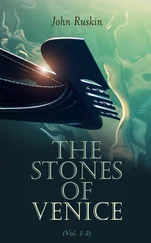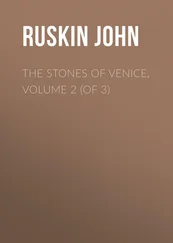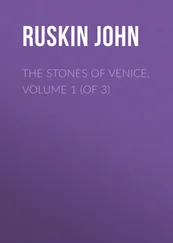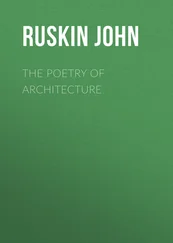John Ruskin - The Crown of Wild Olive
Здесь есть возможность читать онлайн «John Ruskin - The Crown of Wild Olive» — ознакомительный отрывок электронной книги совершенно бесплатно, а после прочтения отрывка купить полную версию. В некоторых случаях можно слушать аудио, скачать через торрент в формате fb2 и присутствует краткое содержание. Жанр: foreign_antique, foreign_home, literature_19, visual_arts, на английском языке. Описание произведения, (предисловие) а так же отзывы посетителей доступны на портале библиотеки ЛибКат.
- Название:The Crown of Wild Olive
- Автор:
- Жанр:
- Год:неизвестен
- ISBN:нет данных
- Рейтинг книги:4 / 5. Голосов: 1
-
Избранное:Добавить в избранное
- Отзывы:
-
Ваша оценка:
- 80
- 1
- 2
- 3
- 4
- 5
The Crown of Wild Olive: краткое содержание, описание и аннотация
Предлагаем к чтению аннотацию, описание, краткое содержание или предисловие (зависит от того, что написал сам автор книги «The Crown of Wild Olive»). Если вы не нашли необходимую информацию о книге — напишите в комментариях, мы постараемся отыскать её.
The Crown of Wild Olive — читать онлайн ознакомительный отрывок
Ниже представлен текст книги, разбитый по страницам. Система сохранения места последней прочитанной страницы, позволяет с удобством читать онлайн бесплатно книгу «The Crown of Wild Olive», без необходимости каждый раз заново искать на чём Вы остановились. Поставьте закладку, и сможете в любой момент перейти на страницу, на которой закончили чтение.
Интервал:
Закладка:
'But what has all this to do with our Exchange?' you ask me, impatiently. My dear friends, it has just everything to do with it; on these inner and great questions depend all the outer and little ones; and if you have asked me down here to speak to you, because you had before been interested in anything I have written, you must know that all I have yet said about architecture was to show this. The book I called 'The Seven Lamps' was to show that certain right states of temper and moral feeling were the magic powers by which all good architecture, without exception, had been produced. 'The Stones of Venice,' had, from beginning to end, no other aim than to show that the Gothic architecture of Venice had arisen out of, and indicated in all its features, a state of pure national faith, and of domestic virtue; and that its Renaissance architecture had arisen out of, and in all its features indicated, a state of concealed national infidelity, and of domestic corruption. And now, you ask me what style is best to build in; and how can I answer, knowing the meaning of the two styles, but by another question—do you mean to build as Christians or as Infidels? And still more—do you mean to build as honest Christians or as honest Infidels? as thoroughly and confessedly either one or the other? You don't like to be asked such rude questions. I cannot help it; they are of much more importance than this Exchange business; and if they can be at once answered, the Exchange business settles itself in a moment. But, before I press them farther, I must ask leave to explain one point clearly. In all my past work, my endeavour has been to show that good architecture is essentially religious—the production of a faithful and virtuous, not of an infidel and corrupted people. But in the course of doing this, I have had also to show that good architecture is not ecclesiastical . People are so apt to look upon religion as the business of the clergy, not their own, that the moment they hear of anything depending on 'religion,' they think it must also have depended on the priesthood; and I have had to take what place was to be occupied between these two errors, and fight both, often with seeming contradiction. Good architecture is the work of good and believing men; therefore, you say, at least some people say, 'Good architecture must essentially have been the work of the clergy, not of the laity.' No—a thousand times no; good architecture has always been the work of the commonalty, not of the clergy. What, you say, those glorious cathedrals—the pride of Europe—did their builders not form Gothic architecture? No; they corrupted Gothic architecture. Gothic was formed in the baron's castle, and the burgher's street. It was formed by the thoughts, and hands, and powers of free citizens and soldier kings. By the monk it was used as an instrument for the aid of his superstition; when that superstition became a beautiful madness, and the best hearts of Europe vainly dreamed and pined in the cloister, and vainly raged and perished in the crusade—through that fury of perverted faith and wasted war, the Gothic rose also to its loveliest, most fantastic, and, finally, most foolish dreams; and, in those dreams, was lost.
I hope, now, that there is no risk of your misunderstanding me when I come to the gist of what I want to say to-night—when I repeat, that every great national architecture has been the result and exponent of a great national religion. You can't have bits of it here, bits there—you must have it everywhere, or nowhere. It is not the monopoly of a clerical company—it is not the exponent of a theological dogma—it is not the hieroglyphic writing of an initiated priesthood; it is the manly language of a people inspired by resolute and common purpose, and rendering resolute and common fidelity to the legible laws of an undoubted God.
Now, there have as yet been three distinct schools of European architecture. I say, European, because Asiatic and African architectures belong so entirely to other races and climates, that there is no question of them here; only, in passing, I will simply assure you that whatever is good or great in Egypt, and Syria, and India, is just good or great for the same reasons as the buildings on our side of the Bosphorus. We Europeans, then, have had three great religions: the Greek, which was the worship of the God of Wisdom and Power; the Mediæval, which was the Worship of the God of Judgment and Consolation; the Renaissance, which was the worship of the God of Pride and Beauty; these three we have had—they are past,—and now, at last, we English have got a fourth religion, and a God of our own, about which I want to ask you. But I must explain these three old ones first.
I repeat, first, the Greeks essentially worshipped the God of Wisdom; so that whatever contended against their religion,—to the Jews a stumbling block,—was, to the Greeks— Foolishness .
The first Greek idea of Deity was that expressed in the word, of which we keep the remnant in our words ' Di -urnal' and ' Di -vine'—the god of Day , Jupiter the revealer. Athena is his daughter, but especially daughter of the Intellect, springing armed from the head. We are only with the help of recent investigation beginning to penetrate the depth of meaning couched under the Athenaic symbols: but I may note rapidly, that her ægis, the mantle with the serpent fringes, in which she often, in the best statues, is represented as folding up her left hand for better guard, and the Gorgon on her shield, are both representative mainly of the chilling horror and sadness (turning men to stone, as it were,) of the outmost and superficial spheres of knowledge—that knowledge which separates, in bitterness, hardness, and sorrow, the heart of the full-grown man from the heart of the child. For out of imperfect knowledge spring terror, dissension, danger, and disdain; but from perfect knowledge, given by the full-revealed Athena, strength and peace, in sign of which she is crowned with the olive spray, and bears the resistless spear.
This, then, was the Greek conception of purest Deity, and every habit of life, and every form of his art developed themselves from the seeking this bright, serene, resistless wisdom; and setting himself, as a man, to do things evermore rightly and strongly; 3 3 It is an error to suppose that the Greek worship, or seeking, was chiefly of Beauty. It was essentially of Rightness and Strength, founded on Forethought: the principal character of Greek art is not Beauty, but Design: and the Dorian Apollo-worship and Athenian Virgin-worship are both expressions of adoration of divine Wisdom and Purity. Next to these great deities rank, in power over the national mind, Dionysus and Ceres, the givers of human strength and life: then, for heroic example, Hercules. There is no Venus-worship among the Greek in the great times: and the Muses are essentially teachers of Truth, and of its harmonies.
not with any ardent affection or ultimate hope; but with a resolute and continent energy of will, as knowing that for failure there was no consolation, and for sin there was no remission. And the Greek architecture rose unerring, bright, clearly defined, and self-contained.
Next followed in Europe the great Christian faith, which was essentially the religion of Comfort. Its great doctrine is the remission of sins; for which cause it happens, too often, in certain phases of Christianity, that sin and sickness themselves are partly glorified, as if, the more you had to be healed of, the more divine was the healing. The practical result of this doctrine, in art, is a continual contemplation of sin and disease, and of imaginary states of purification from them; thus we have an architecture conceived in a mingled sentiment of melancholy and aspiration, partly severe, partly luxuriant, which will bend itself to every one of our needs, and every one of our fancies, and be strong or weak with us, as we are strong or weak ourselves. It is, of all architecture, the basest, when base people build it—of all, the noblest, when built by the noble.
Читать дальшеИнтервал:
Закладка:
Похожие книги на «The Crown of Wild Olive»
Представляем Вашему вниманию похожие книги на «The Crown of Wild Olive» списком для выбора. Мы отобрали схожую по названию и смыслу литературу в надежде предоставить читателям больше вариантов отыскать новые, интересные, ещё непрочитанные произведения.
Обсуждение, отзывы о книге «The Crown of Wild Olive» и просто собственные мнения читателей. Оставьте ваши комментарии, напишите, что Вы думаете о произведении, его смысле или главных героях. Укажите что конкретно понравилось, а что нет, и почему Вы так считаете.












